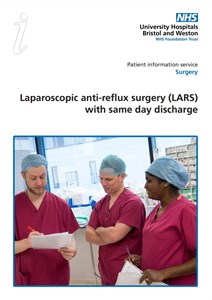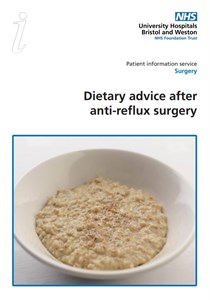The options for treatment include lifestyle modification,
medical treatment with drugs, and surgery.
Lifestyle modification
Well-known factors that tend to make GORD symptoms worse are
being overweight, smoking, and drinking alcohol. Therefore, losing
weight, stopping smoking and avoiding alcohol can significantly
improve symptoms, meaning that no other treatment is required.
Some people also find specific food and drinks make their
symptoms worse. For example, some people find their symptoms are
worsened by hot drinks, especially those containing caffeine such
as coffee and tea. Some people find chocolate is also a trigger. If
your symptoms are bothersome, try avoiding these for a few weeks
and see if your symptoms improve.
Other changes that can help include eating and drinking your
evening meal 6 hours before going to bed, so that when you lie down
your stomach is empty, reducing the tendency for stomach contents
to go up into the oesophagus. Some people also find benefit by
sleeping propped up, or raising the head of their bed.
Medical treatment
The most commonly used drugs to treat GORD symptoms are a group
of medicines called Proton Pump Inhibitors (PPIs). These include
omeprazole and lansoprazole, amongst others. For the majority of
patients, these drugs are highly effective in controlling symptoms.
As GORD symptoms are so common, these types of drugs are some of
the most widely used in the NHS. Sometimes the dose of these
medications may be varied depending upon changes in the severity of
symptoms - this is something your doctor can advise you about.
Other commonly used drugs are a type of anti-histamine, such as
ranitidine. If you have side effects on PPIs, your doctor may try
this type of medicine instead.
Other useful medicines available over-the-counter include
antacids such as Gaviscon that can have an immediate soothing
effect.
Surgery
Only a small proportion of patients with GORD symptoms should
consider surgery. Most people find that their symptoms vary over
time, and that they are well controlled with a combination of
lifestyle changes and drug treatment. However, some people have
severe symptoms that are difficult to control, for example because
they have significant side effects on medical treatment. If surgery
is being considered, you will usually have several tests as
described in the 'Tests' section to help determine whether you will
benefit from surgery.
The operation involves a general anaesthetic and is usually
performed with keyhole surgery. Most people who have surgery have a
hiatus hernia, where the top part of the stomach has slipped
upwards into the chest. This is repaired so that the stomach sit
entirely in the abdomen. In addition, an anti-reflux procedure
called a fundoplication is performed. There are different ways to
perform this, and your surgeon will explain what will be their
approach.
In appropriately selected people, surgery can provide good
relief of symptoms, but there is a risk of side effects and
complications.
 |
Many patients having anti-reflux
surgery can go home the same day as their operation. We have
produced an information leaflet explaining what is involved,
specifically designed to help people prepare for having antireflux
surgery as a day case. Download this by clicking on the picture or
this link
here. It is also useful for patients having antireflux surgery
as an in-patient, staying in hospital for at least one night. |
 |
You will need to modify how you eat and drink
while you recover from the operation. Click
here for our diet sheet which explains how to do this and
what to expect. Immediately after your operation, you will usually
be on a liquid or very soft diet to allow the swelling from the
operation to settle. After a few weeks, you will usually be allowed
to slowly build up the texture of food, and most people can eat
normally as time goes on. However, some people always find that
certain foods, particularly bread and meat, tend to get stuck
unless they have small mouthfuls and chew carefully, often
washing food down with a drink. Other common side effects
include bloating, being unable to vomit, and increased flatulence.
Besides these side effects, there are a range of risks involved in
having this type of surgery. Your surgeon will tell you more about
the operation, its benefits and risks, and any specific issues
relevant to your care. |